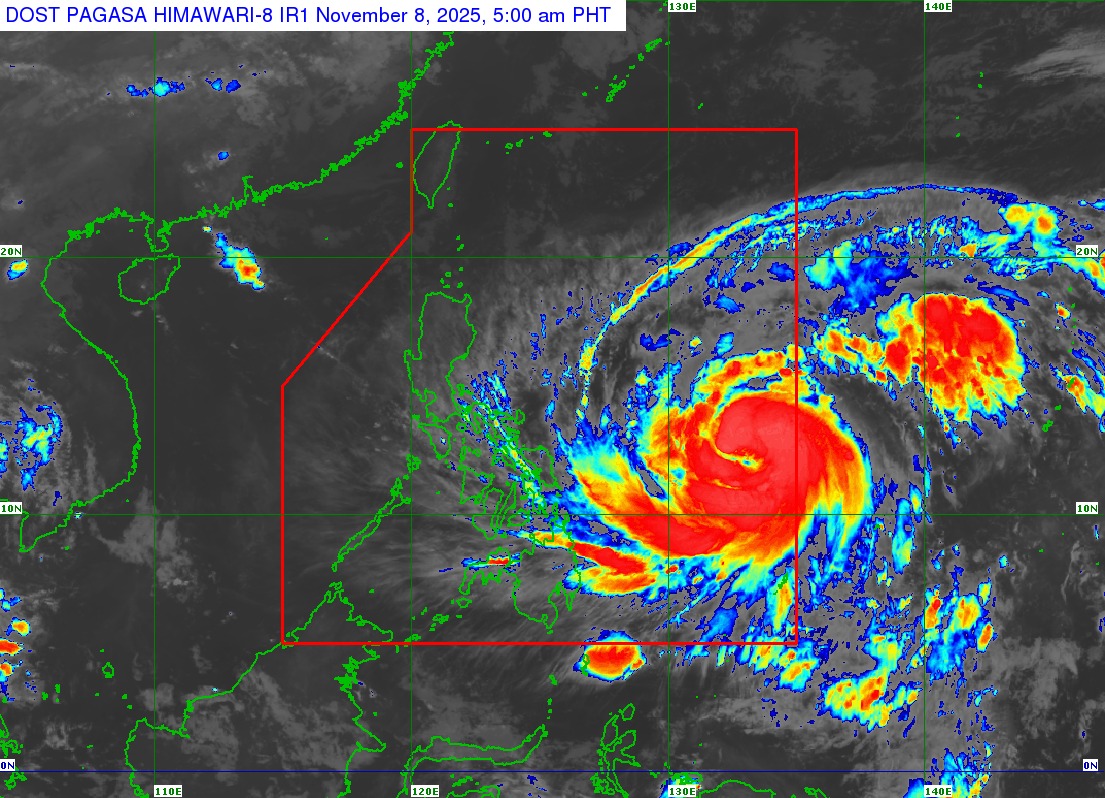Copyright International Business Times

The situation involving Typhoon UWAN (FUNG-WONG) is escalating rapidly, demanding immediate attention across the Philippines. As of 5:00 AM on 8 November 2025, the typhoon is actively strengthening while moving west northwestward over the sea east of Eastern Visayas. State weather officials have delivered a terrifying forecast: the storm is predicted to undergo 'rapid intensification' and may reach the devastating Super Typhoon category by tonight or tomorrow morning. With its centre estimated at 985 km East of Eastern Visayas, packing maximum sustained winds of 130 km/h and gustiness of up to 160 km/h, every hour is crucial for preparation. The looming threat carries the highest possible alert, with the highest Tropical Cyclone Wind Signal (TCWS) that will likely be hoisted throughout its passage being Wind Signal No. 5. This escalating danger is prompting widespread evacuations and urgent safety measures, as the nation prepares for a potential landfall at or near the typhoon's peak lifetime intensity. 'Super Typhoon' Uwan: High Risk of Life-Threatening Storm Surge The most immediate and catastrophic threat from Typhoon Uwan is the forecast for coastal flooding. Forecasters are warning of a 'high risk of life-threatening and damaging storm surge with peak heights exceeding 3.0 m' within the next 48 hours. This wall of water poses an extreme danger to low-lying and exposed coastal communities. The areas under the highest risk for this damaging storm surge include the coastal communities of Isabela, Aurora, Quezon (including Polillo Islands), Camarines Norte, Camarines Sur, Catanduanes, Albay, Sorsgon, Northern Samar, and Eastern Samar. Meanwhile, the Tropical Cyclone Wind Signals (TCWS) have been raised across numerous regions, indicating the widespread wind threat. TCWS No. 2 (Gale-force winds of 62 to 88 km/h) is in effect for Catanduanes in Luzon, as well as several eastern and central portions of Northern Samar, the northeastern portion of Samar, and the northern portion of Eastern Samar in Visayas. These areas face a minor to moderate threat to life and property. TCWS No. 1 (Strong winds of 39 to 61 km/h) is much more extensive, covering almost all of Luzon, the rest of the Visayas, and parts of Mindanao, including Dinagat Islands and Surigao del Norte. Furthermore, mariners are facing treacherous conditions, with a Gale Warning in effect over the northern and eastern seaboards of Luzon and the eastern seaboard of Visayas. Sea travel is now considered 'risky for all types or tonnage of vessels' across vast coastal waters, where wave heights could reach up to 14.0 m. All mariners have been advised to remain in port or seek shelter immediately. Landfall Imminent: The Forecasted Track of Typhoon Uwan The critical phase of the typhoon's journey is expected to unfold over the next 48 hours. The forecast track shows Typhoon Uwan moving west northwestward until Monday, 10 November, before making a turn generally north northwestward by Tuesday, 11 November. The centre of the typhoon is projected to make landfall over the southern portion of Isabela or the northern portion of Aurora tomorrow (9 November) late evening or early Monday morning. The timing is crucial, as the storm is expected to be at or near its peak intensity when it hits the coast. After striking land, Typhoon Uwan will traverse the mountainous terrain of Northern Luzon, which is expected to cause it to weaken. However, officials warn that it is expected to remain a typhoon throughout its passage over Northern Luzon and when it emerges over the West Philippine Sea on Monday morning or afternoon. All residents, especially those in areas identified as highly susceptible to the hazards, are urged to follow evacuation and other instructions from local officials immediately. The public must also be aware that heavy rainfall, severe winds, and storm surge may still be experienced in localities outside the direct landfall point and the forecast cone. Authorities are advising communities to monitor for updated warnings and advisories from the local PAGASA Regional Services Division.



